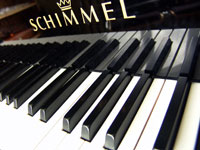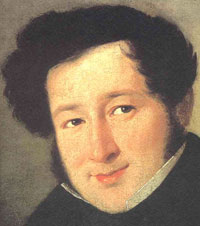Using music in the science classroom Teach article
Caroline Molyneux, from Balshaw’s Church of England High School, UK, explains how she kick-starts her classes and helps her students remember certain lessons, facts or concepts.

T. Kemnitz
Music is known to affect our feelings and energy levels (Brewer, 1995). It can prompt memories, enhance brain activity and stimulate the mind. In today’s consumer-driven society, a piece of classical music can make us think of a certain make of car. A popular song can conjure up thoughts of a famous perfume brand. Why not harness this subliminal messaging method for learning? In a multimedia society, any tool that can be used to engage pupils is invaluable (Beady, 2001).
As a pilot project, I experimented with the use of music to inspire my tutorial group at the start of the day. I used any feel-good tune, which I called ‘music of the day’. I would write the name and composer of the music on the chalkboard, along with a ‘thought for the day’. These were motivating phrases or quotes that were provided by the school, to be read out to all tutorial groups each morning.
Examples of ‘thought for the day’ include:
- Why is abbreviation such a long word?
- Only the guy who isn’t rowing has time to rock the boat
- Anyone who has never made a mistake has never tried anything new
- Imagination is more important than knowledge (Albert Einstein)

by an unknown artist
Public domain image;
Image source Wikimedia
Commons
I found that simply reading these out loud did not have a great effect on pupils. But when the thought for the day was displayed alongside the music of the day, with the music playing, pupils began to take a lot more notice of both. They wanted to know exactly what the music was and who wrote or sang it, and then what the thought for the day was.
The response was amazing. Each day the pupils would be excited to enter the room to hear what was playing. Pupils would be waiting at the door before I arrived, eager to hear what the day’s selection would be. I found that the most successful songs were those that pupils had heard before but did not know by name (or composer), such as Ravel’s ‘Bolero’ and Rossini’s ‘William Tell Overture’. I developed the idea of having theme weeks, in which the music would follow a theme such as ‘French music’ or ‘The musicals’.
Pupils began to make requests, and it wasn’t popular chart music that they were asking for. All the pupils got involved – both confident and quiet, boys and girls. We took it in turns to pick the music so that everyone got a chance. Pupils would compete to find the most obscure but interesting music. Requests included the classical piece ‘Dance of the Knights’ from Prokofiev’s Romeo and Juliet (pupils were studying Shakespeare’s play in their drama class) and ‘Matchstalk Men’ by Brian & Michael – a song about the famous early 20th-century Manchester artist L S Lowry.
The music boosted pupils’ general knowledge as well as entertaining them. They discovered that the composer John Williams wrote the theme music for the Harry Potter films, and that several famous comedians, including John Cleese of James Bond-film fame (previously one of the Monty Python team) collaborated to produce the well-known novelty song ‘Always Look on the Bright Side of Life’. Some pupils even recognised the song from football chants but had no idea where it came from.

Image courtesy of Paranoid;
Image source Wikimedia
Commons
Early-morning morale amongst my tutorial group soared and pupils would go off to lessons happy to begin the day. I received visits from other pupils and members of staff who had heard about the music and had come to investigate. The project lasted for a full term (approximately four months), and was so popular that I have continued to use this idea. If I ever forget to put a piece of music on in the morning then I get complaints!
Next, I began to develop a portfolio of music to link to the science curriculum. At the time, I was writing the schemes of work (detailed lesson plans for a whole year group) for the new GCSE in core science, so I linked music to the topics and included them in the scheme of work.
I would play the music as pupils entered the classroom. Immediately they would begin to search for the link between the music and the lesson title and objectives which I had displayed on the board. Before pupils had even sat down, opened their bags or taken out their pens and pencils, they had begun to think about the lesson. I began to challenge the higher-ability pupils by making the links more tenuous. One example of this was ‘Under Pressure’ by Queen, which I used to introduce a lesson entitled ‘Salt in the Diet’. Several pupils guessed that too much salt in the diet must cause high blood pressure. Pupils had begun to guess the outcomes of the lesson before I had introduced anything other than the lesson title!
The idea began to develop. My websitew1 displays the lesson titles for the following week; pupils would visit the website, look at the titles and suggest music that could be used to begin the lesson. Pupils were inadvertently preparing themselves for future lessons!
In search of appropriate music, I linked not only the titles but also the lyrics of some songs to the curriculum: ‘Big Yellow Taxi’ by Joni Mitchell includes the line “They paved paradise and put up a parking lot.” This was perfect for use with lessons on how humans affect their environment. Pupils listened attentively, waiting for a link to the lesson.

Frankfurt, Germany
Image courtesy of Pixelquelle/
Martina Taylor
I developed the idea even further by using other types of music for effect during presentations. ‘Carmina Burana’ by Carl Orff is an extremely dramatic piece that I linked to a presentation on the huge negative impact of microwave meals on the UK population’s diet. Jane Birkin & Serge Gainsbourg’s ‘Je T’Aime Moi Non Plus’ was used during a lesson on hormones to indicate the effect that they have on adolescent boys and girls.
To evaluate the effectiveness of the idea, I would play a piece of music used in a past lesson and give the pupils the duration of the song to summarise the key points of that lesson. I found that the music provoked memories of facts and skills that the pupils had learned. I would simply play the music and pupils would immediately remember facts. During Diana Ross’s ‘Chain Reaction’, which had been linked to a lesson on nerves and reflex reactions, some pupils managed to write down the sequence of events in a reflex arc! This highlighted the success of the project, along with the positive comments made by the pupils: “Miss Molyneux has a song for every occasion” and “Can we have more music throughout the lesson?” Pupils were overheard telling prospective students and their parents about the music and how it made the start of lessons exciting.
Below are some examples of the music I have used.
| Song | Science Curriculum Link |
|---|---|
| ‘Danger, Danger High Voltage’ – Electric Six | Electricity – KS3 and Year 10 Physics (new GCSE) |
| ‘The Drugs Don’t Work’ – The Verve | Drugs – Biology Year 10 (new GCSE) |
| ‘Rock DJ’ – Robbie Williams | Rocks – Chemistry Year 8 |
| ‘Me and My Shadow’ – Various | Light – Physics Year 8 |
| ‘Oliver Twist’ – Food Glorious Food | Food and Digestion – Years 8 & 10 |
| ‘Fast Food Rockers’ – Fast Food Song | Malnutrition and Obesity – Year 10 |
In the future I hope to expand the idea across the school, perhaps involving the music teachers, who could suggest pieces to play and link science topics with their curriculum. I already produce a revision CD for pupils, on which I read out useful tips and facts for the GCSE examinations. Incorporating some of the music that has been used during lessons might give pupils a further boost in their preparation for exams.
Is this a gimmick? Well, yes, it probably is. But we live in a society full of gimmicks that work. I believe that any way to get pupils to pay attention, learn and retain information is worth trying.
References
- Beady Jr CH (2001) Whatever It Takes (2 Motivate 2-Daze Youth). Piney Woods, MS, USA: Dr Beady
- Brewer C (1995) Music and Learning: Seven Ways to Use Music in the Classroom. Tequesta, FL, USA: LifeSounds
Web References
Resources
- For more information or if you would like further examples of music that can be used in the science classroom, visit our website, and click on ‘Science’ then ‘Science Teacher Area’.
- Mike Fleetham’s Thinking Classroom website has information on music and learning.
- Music in the Classroom
- Songs for Teaching
- For an excellent article on the science in music, see:
- Woodhouse J, Galluzzo PM (2004) Why is the violin so hard to play? Plus Magazine
Review
The article deals with music, which is an important feature of today’s world but is rarely incorporated into the classroom. The article makes interesting reading for teachers who are seeking new approaches to teaching and learning, which have already been tested by others and found to be successful. The article engages all kinds of teachers, who teach motivated and non-motivated students, in all educational settings.
The article is clearly written and gives practical examples of songs that the author has used, together with the related syllabus topics as applied in the classroom. The article also cites other literature (in journals and online resources) to support its assertions. Another interesting link that I found discussed Gardner’s Multiple Intelligences theory, which includes ‘musical intelligence’ in the eight intelligences that encompass human potential.
The content of the article is easily transferable from the science arena to other areas of the school curriculum. Some of the links provided also give similar resources to non-science teachers. The article could well be the starting point of a staff development meeting in which teachers explore the possibilities of using music in their classrooms. Music may be used at different stages of the lesson – as an introduction, conclusion or reinforcement, for example. Music may be linked to other multimedia activities in the classroom to make learning spontaneous and within reach for all students.
It would be great if, as a consequence of this article, an educational organisation took the initiative to create a website with music clips, together with suggested areas of the curriculum with which the music can be used. This website could provide all the available freeware music clips in one location, where teachers around the world could access related educational materials. A forum or blog on the website would enable other teachers to relate their experiences when particular music clips were used in their classrooms and even suggest other music clips.
Gaetano Bugeja, Malta





